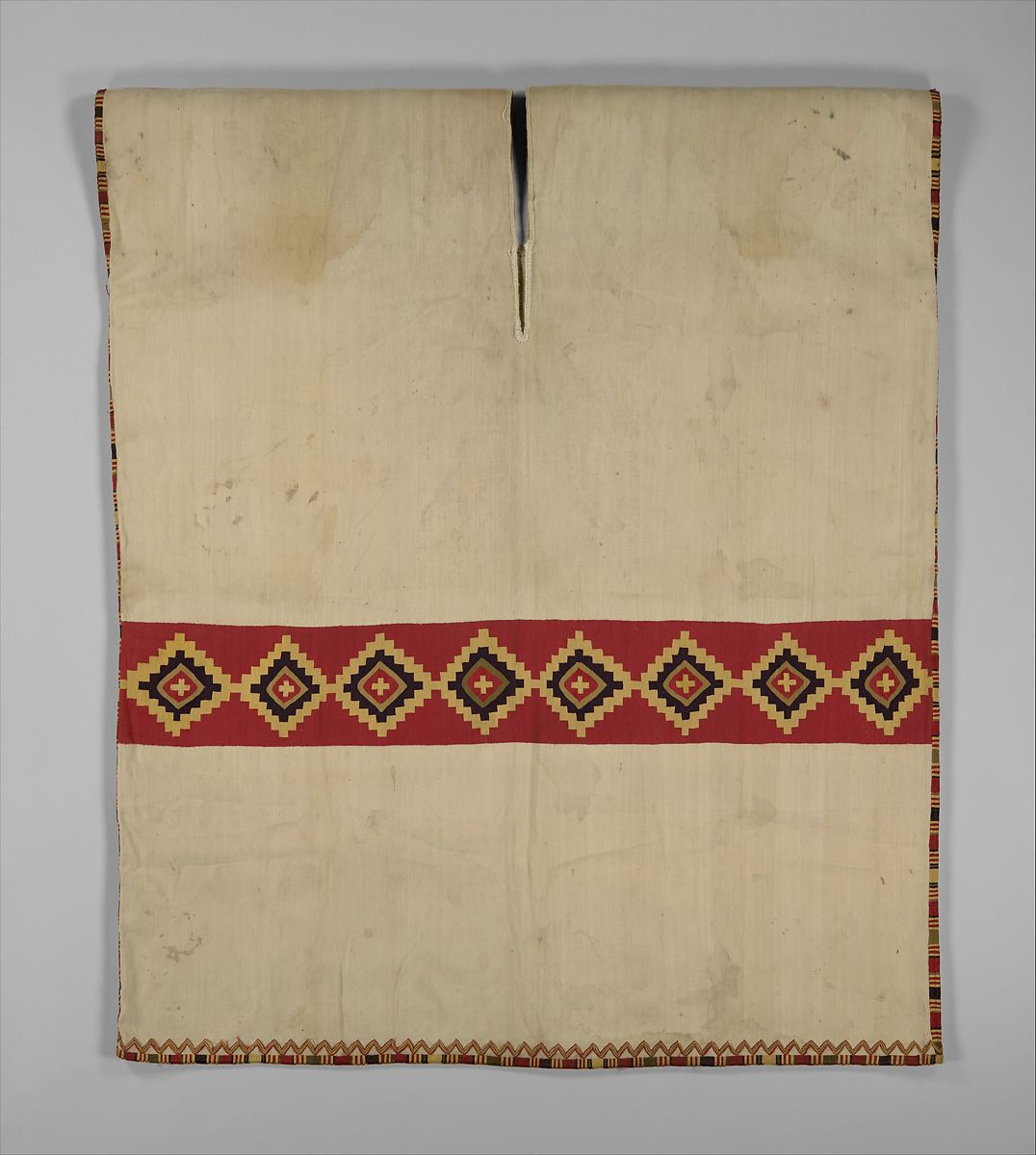From “The Andean Highlands, an Introduction.” by Wendell C. Bennett, 1946.
Although details of dress reflected regional and time differences, the standard clothing pattern remained the same throughout the archeological periods of the Central Andes. The basic male costume consisted of a breechclout, a wrap-around skirt, a shirt with or without sleeves, and a shawl. The women wore a wrap-around single-piece dress, secured at the waist by a belt, and a mantle over the shoulders. Both men and women wore sandals and some kind of headgear. A woven bag with a shoulder strap was a standard part of the costume.
Class distinctions in costume are clearly depicted in the Early Mochica Period ceramics. Early Period graves on the South Coast differ in the elaborateness of clothing which accompanies the burials. Costume also distinguished certain occupational groups, such as warriors, priests, and runners. In all periods, special costumes were made for dancers. Mortuary clothing was not only distinctive but also elaborate.
A great variety of ornaments and methods of body decoration were employed in the Early Periods. Tattooing, scarification, and face painting were practiced. Skulls were artificially deformed. Earplugs, nose plugs, and lip plugs were common, and ornamental facial masks were worn. The artifacts discovered in excavating Early sites include many types of beads, necklaces, anklets, rings, collars, plumes, and metal or shell pincers for beard plucking. Although some of the scarification depicted on the modeled pottery vessels may have been ornamental, there is no indication of the leg or arm ligatures so typical of the Amazon.
The Colonial Spanish Period introduced many changes in costume. As part of the process of reducing all Indians to one class level, distinctions in clothing were eradicated. The Indians were forced to adopt new types of clothing in an effort to make them forget their cultural unity. Likewise, many of the Indians voluntarily imitated the clothing of the Spaniards. The result was the creation of a new standard costume for Indians, consisting of pants, jacket, shirt, ponchos (introduced in the post-Spanish time), and hats.
At the present time, the Indians still use this 16th-century costume. The men wear sandals, short pants, shirts, vestlike jackets, and the sleeveless poncho. They still carry a woven or a leather bag. Headgear varies enormously, and the Aymara wear both a knit stocking cap and a felt hat. Women wear several skirts, a belt, a blouse, a blanket, and a felt hat. Regional distinctions are still reflected in the details of the costume, and special dance costumes are still used.
Bennett, Wendell C. “The Andean Highlands, an Introduction.” Handbook of South American Indians, edited by Julian H. Steward, vol. 2, 1946.
About TOTA
TOTA.world provides cultural information and sharing across the world to help you explore your Family’s Cultural History and create deep connections with the lives and cultures of your ancestors.





